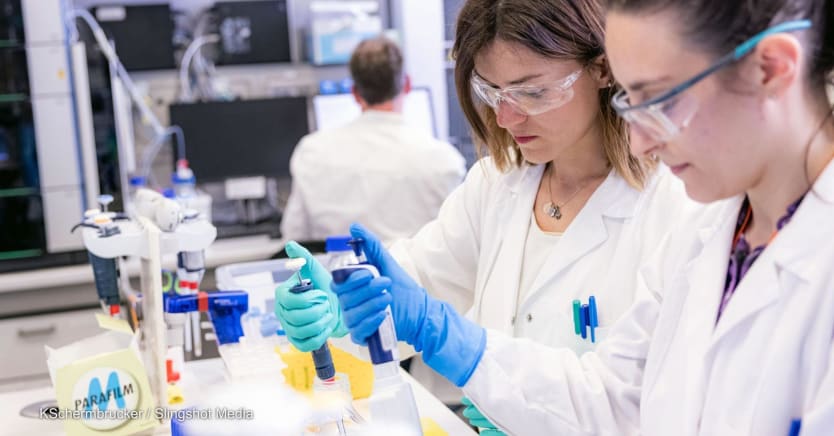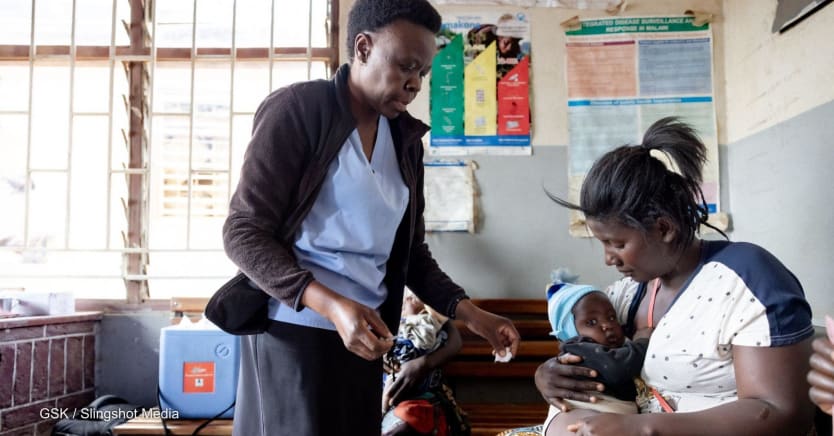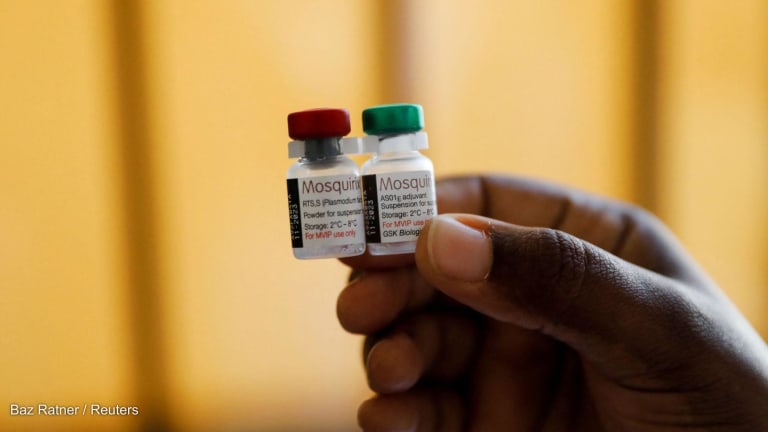
This article was paid for and edited by GSK.
After decades of research, the global health community is seeing major progress in the fight against malaria. Two first-generation vaccines are now approved and being deployed across Africa, with 19 countries introducing them into routine childhood immunization programs as of April 2025. Early data shows that these vaccines are helping to reduce severe illness, hospitalizations, and child deaths alongside other prevention tools.
But challenges remain. These first-generation vaccines offer moderate protection and require multiple doses. That’s why researchers at GSK are pushing forward with a second-generation vaccine program to develop what they hope will be a new, improved vaccine. Combining new technology with the science behind the earlier vaccines, the aim is to improve efficacy, provide longer-lasting protection, and simpler delivery — including the ability to target multiple stages of the parasite’s lifecycle. In parallel, GSK is focusing on improving the impact of its first-generation vaccine through strategies such as dose optimization, which it hopes can increase coverage and reduce costs.
What is the world’s first malaria vaccine?
RTS,S is the world’s first malaria vaccine approved and recommended for endemic countries by the World Health Organization. Developed by GSK in partnership with PATH and a network of African research centers, with support from the Gates Foundation, this vaccine targets Plasmodium falciparum, the most dangerous malaria parasite globally and most widespread in Africa. As of 2023, the WHO African region accounted for 94% of global malaria cases, or 246 million, and 95% of malaria deaths, or 569,000, worldwide.
According to modeling from the World Health Organization, malaria vaccines could prevent up to 500,000 child deaths by 2035 if scaled up in moderate-to-high-burden regions.
“This kind of work depends on long-standing collaborations with partners who trust us, understand the process, and know what’s needed,” said Dr. Katie Ewer, who leads the malaria vaccine research and development at GSK.
Speaking to Devex, Ewer discussed how new science is opening the door to more effective vaccines, what’s next for malaria vaccines, and why an integrated “toolbox” approach is essential to eliminate malaria for good.
This conversation has been edited for length and clarity for the purposes of this article, which has been funded and co-created by GSK.
What’s behind the rise in the number of malaria cases seen in recent years?
As reported in the World Malaria Report 2024, in some countries, such as Pakistan, there were millions more cases due to catastrophic flooding that not only expanded the habitat where the mosquito that spreads malaria can live, but also disrupted the delivery of malaria control efforts. This is an example of why health system strengthening is so important — because when you get interruptions to these routine services, it can really open the door to increases in cases.
In other places like Nigeria, the increase in the number of cases is proportional to the increase in the population. In some parts of East Africa, it’s less clear, but we know that there is the emergence of artemisinin-resistant parasites being detected now — drug-resistant parasites that don’t respond to the front-line treatments that we use for malaria. Then there’s climate change, which changes the habitats that are available to mosquitoes. It makes places wetter that weren’t wet before and warmer that weren’t warm before.
What prompted GSK’s push for a second-generation malaria vaccine, and what specific gaps is it designed to fill?
There’s more to do in the malaria space, not just from the scientific perspective, but also because the challenge of controlling malaria is growing — we’re seeing a rise in recorded malaria cases. Alongside other interventions such as seasonal chemoprevention, indoor residual spraying, and bed nets, the need to continue advancing vaccine research is strong.
Part of what we’re researching is reducing the number of vaccinations that are needed and ensuring that the product that we’re making is affordable and can be manufactured at scale so that we can produce enough of it to try to control this huge problem.
How does this next-generation vaccine differ from current first-generation vaccines, and what potential advantages could it bring to endemic countries?
We’re in the very early development stages of our second-generation vaccine. There are a few parts to this work. First, we’re looking at how to optimize the first-generation vaccine and improve its performance.
Second, we’re exploring the new science that’s emerged since the first-generation vaccine was designed. We’re looking at things like new antigens and newly identified knowledge about the malaria parasite. We now better understand the role these play in how the parasite infects the human body, and we’re looking for what we like to think of as the parasite’s Achilles’ heel — vulnerabilities we can target with vaccines.
Finally, we’re revisiting how we deploy vaccines — how many doses are needed and how much to give — to generate the best possible immune response.
GSK is exploring a combination approach targeting both the liver and blood stages of the malaria parasite. Why is this dual-target strategy significant in the fight against malaria?
Malaria has a very complex life cycle. It has an early stage, which current vaccines target, where, after you’re bitten by a mosquito, the parasite travels to your liver. That journey takes only between half an hour and two hours, so it’s a very short window for the vaccine to work. But if it does, it can completely block the body from being infected by the parasite. However, these first-generation vaccines aren’t perfect, so some parasites still make it to the liver. They then grow and are released into the bloodstream — that’s when you get sick.
What we’re working on now is adding another component to the vaccine that targets this later blood stage. So if any parasites sneak through that first layer of protection, this new component can mop them up. This is a strategy the field has been exploring for some time, but only in the last 12 months have a few key breakthroughs made it feel truly feasible. It’s very exciting to now be in a position to harness this new technology and use it in a second-generation vaccine.

With increasing threats to malaria control, how important are new approaches in keeping pace with these evolving challenges?
It’s a big challenge to try to control malaria, and vaccines alone won’t be enough. We’ve also seen great innovation in other areas of malaria control, like next-generation bed nets and the use of protective drugs for children during the malaria season, known as Seasonal Malaria Chemoprevention. Similar drugs are used to prevent malaria during pregnancy. Then there are tools to control the vector, like indoor insecticide spraying to reduce mosquito populations.
There’s no magic bullet or single tool that will eliminate malaria. But there is a huge amount of innovation happening, and we’re seeing real progress with the tools we already have. So I think there’s more optimism than ever that we can have the impact we want if we have the funding to deliver it.
This vaccine is still in the research and development stage. How long do you think it will take to develop?
The first-generation vaccines took over three decades to reach licensure — partly because they were the first. Now that we have two licensed vaccines being deployed, we anticipate that it will be much easier for second-generation products.
The early discovery stage usually takes a few years, followed by several more years of clinical development, starting with safety testing, then proof of concept, and eventually large-scale efficacy trials. Vaccines can fail at any of these stages. But if we look at how quickly COVID vaccines were approved, it shows that all of this is possible with the right urgency and drive to meet critical medical needs.
The risk of failure is always high with vaccines, but we’d like to think that within the next 10 years, we could have a second-generation product ready.
Looking more broadly, what role do you see next-generation vaccines playing in the global “toolbox” of malaria interventions?
As child death rates from malaria hopefully begin to decline and stabilize, attention will shift to elimination. We’ll start thinking about the next populations to target and move from reducing deaths to reducing transmission.
There’s still a lot to do, and it won’t happen overnight. But the path to elimination is clear. We’ve eliminated other infectious diseases with vaccines, and we hope to do the same with malaria.
For more information on how scientists at GSK are working to change the trajectory of infectious diseases in lower-income countries, please visit: Global health | GSK








